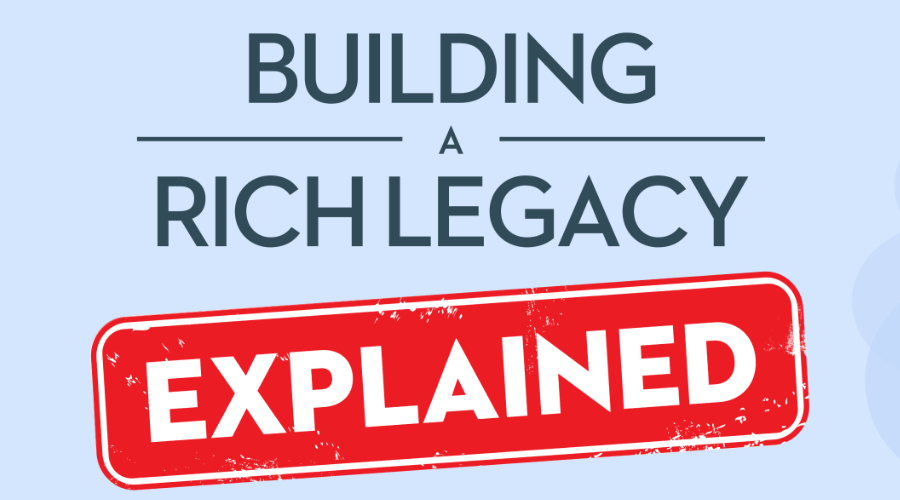Two of the most common ways for Canadians to save for retirement are the Registered Retirement Savings Plan (RRSP) and Tax-Free Savings Account (TFSA). Although there are key differences between RRSP and TFSA, both offer opportunities for tax-free savings growth. Should you save for retirement in an RRSP, a TFSA, or both? Here are some important considerations to help you decide which option is best for you.
What is a TFSA?
Here are some of the key features and benefits of a Tax-Free Savings Account.
- Tax-free investment growth. Contributions to a TFSA and any investment earnings grow tax-free.
- Tax-free withdrawals. Withdrawals from a TFSA are not subject to tax.
- Flexible use. You can make withdrawals from a TFSA at any time, without penalty, for any short-term or longer-term need.
- Wide range of investment options. TFSAs can hold a variety of investments, including stocks, bonds, mutual funds, Guaranteed Investment Certificates, and cash or savings accounts.
- Contribution limits. Annual contribution limits are set by the Canada Revenue Agency (CRA) and include any unused contribution room from previous years, plus any withdrawals made from your plan.
What is an RRSP?
A Registered Retirement Savings Plan (RRSP) is a savings vehicle designed specifically to help you save for retirement. Here are some of the main benefits and features of an RRSP.
- Tax-deductible contributions. Contributions are tax-deductible, which helps to reduce your taxable income and, ultimately, the taxes you pay.
- Savings grow-tax free. The savings and investments in your RRSP grow tax-free. Although the assets in an RRSP are eventually subject to tax, this does not occur until withdrawals are made in retirement, when you are usually in a lower tax bracket.
- Flexible investment options. Like a TFSA, an RRSP offers a wide range of investment options, including stocks, bonds, mutual funds, and Guaranteed Investment Certificates (GICs).
- Contribution limits. For the 2023 taxation year, you are allowed to contribute $30,780, or 18% of your earned income the previous year, whichever is lower. Any amounts not contributed can be carried forward indefinitely.
- Spousal RRSPs. A spousal RRSP allows a spouse or common-law partner – typically the higher-income spouse – to contribute to the lower-income spouse’s RRSP and help to balance retirement incomes between spouses.
Comparison of RRSP and TFSA
| RRSP | TFSA | |
|---|---|---|
| Eligibility based on age | You can set up and contribute to an RRSP up to age 71, as long as you have filed a tax return | Available to Canadians 18+ |
| Contribution limits for 2023 | 18% of your earned income in 2022, up to $30,780 | $6,500 |
| Can you carry unused contribution room forward? | Yes | Yes |
| Can you name a beneficiary? | Yes | Yes |
| Flexible investment options, including stocks, bonds, GICS, and cash | Yes | Yes |
| Tax-free investment growth | Yes | Yes |
| Are withdrawals taxable? | No | Yes, withdrawals are taxed as income unless used to purchase a home (under the Home Buyers’ Plan) or education (under Lifelong Learning Plan) |
| Can you contribute to your spouse’s account and receive the tax benefit? | No | Yes |
| Penalties for overcontribution? | Yes: 1% a month on the over-contributed amount | Yes: 1% a month on the over-contributed amount |
| How long do the plans last? | A TFSA can remain open for your lifetime | You have to wind down your RRSP by the end of the year in which you turn 71. The most popular option is to then convert your plan into a Registered Retirement Income Fund (RRIF) and make annual withdrawals |
Differences between RRSP and TFSA
There are some important differences between an RRSP and TFSA – especially when it comes to taxation. In terms of the similarities, both offer tax-free earnings growth within the plan. However, only an RRSP contribution can reduce your taxable income. This is an important incentive offered by the federal government to encourage individuals to save for their retirement.
Another key difference concerns withdrawals. Withdrawals made from a TFSA are not subject to tax, while withdrawals made from an RRSP are added to your income and are therefore taxable. The only exception is money taken out of your RRSP to purchase your first home or continue your education.
Another key difference is that, since withdrawals made from a TFSA are not added to your taxable income, they do not affect your eligibility for income-tested benefits like Old Age Security (OAS). However, withdrawals made from an RRSP (typically when the plan converts to a RRIF) are added to your taxable income and may affect your eligibility for OAS benefits.
Should I Max out TFSA or RRSP first?
Ideally, it’s a good idea to save in both an RRSP and a TFSA. But the reality is that many of us will have to make choices of where we invest our savings. Here are some scenarios where each savings plan is highlighted.
Contribute to an RRSP when your income is higher.
In general, the higher your tax bracket, the more an RRSP can reduce the taxes you pay. There are two reasons to favour an RRSP when your income is higher. One is that you receive a tax deduction, which lowers your taxable income. And two, an RRSP lets you defer paying taxes until you retire – when your income is usually lower.
Contribute to a TFSA if you are saving for a short-term goal.
Unlike an RRSP, which is specifically designed for retirement savings, a TFSA is a good choice if you’re saving for a shorter-term goal, such as a home renovation or a new car.
Contribute to an RRSP if you’re considering upgrading your education.
The Lifelong Learning Plan allows you to withdraw funds from your RRSP without paying taxes or penalties to finance training or education.
Contribute to a TFSA if you’ll need access to your money sooner.
A TFSA can be used to build an emergency fund or pay for any unexpected expenses such as a large medical bill. You can withdraw funds from your plan at any time without paying tax. Plus, if you are making withdrawals from your TFSA in retirement, they do not affect your eligibility to receive OAS payments.
When RRSP or TFSA isn’t enough during Retirement
As we’ve seen, both a TFSA and RRSP can help you grow your savings tax-free and be used as a source of income in retirement. But with the cost of living skyrocketing, many Canadians have had to dip into their savings in order to maintain their standard of living. That’s why Canadian homeowners aged 55+ are looking to their homes to boost their retirement income.
With a CHIP Reverse Mortgage, you can access up to 55% of the equity in your home in tax-free cash. The funds can be used to meet a variety of different needs, such as day-to-day expenses, taking a much-needed vacation, helping your children with a down payment on their first home, or just making your retirement more enjoyable.
Plus, with a CHIP Reverse Mortgage, you are not required to pay the funds back until you move or sell your home. Best of all, you get to stay in the home you love – a dream shared by more than 90% of Canadians. And since the money you receive from a reverse mortgage is a loan, it’s not added to your taxable income and does not affect benefits such as the OAS. Learn more about how the CHIP Reverse Mortgage works and/or call 1-866-758-2447 toll-free to see how it can help meet your cash-flow needs in retirement.































